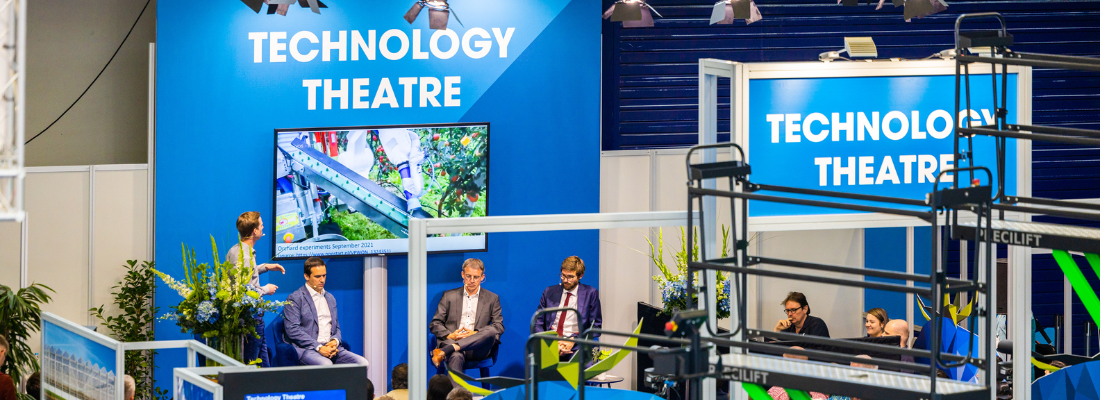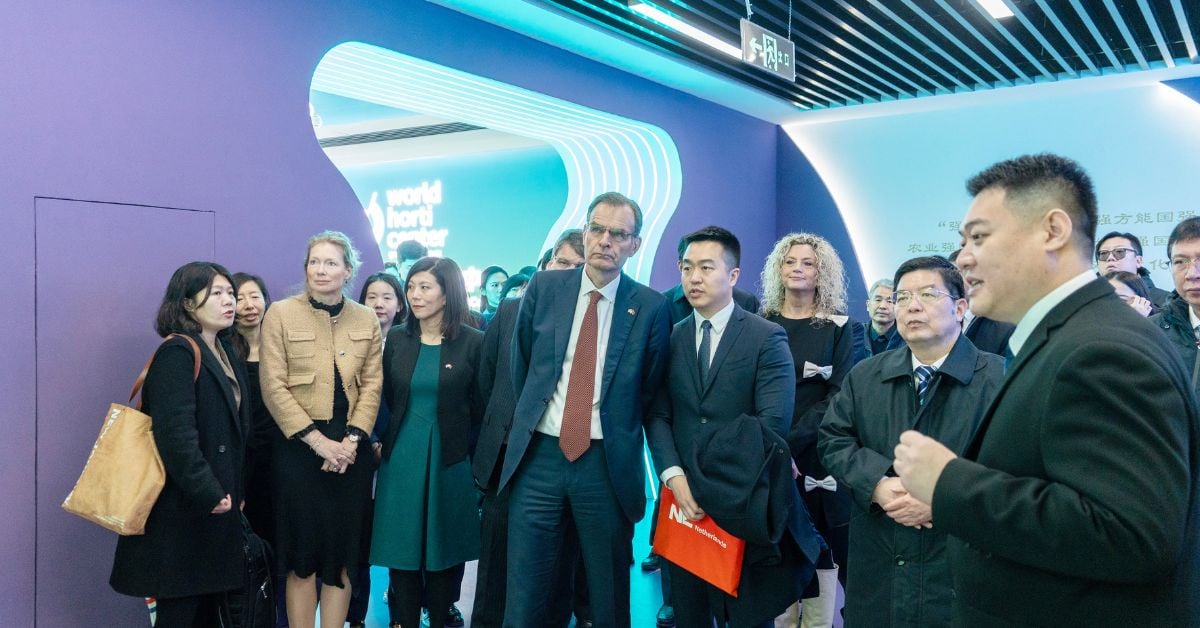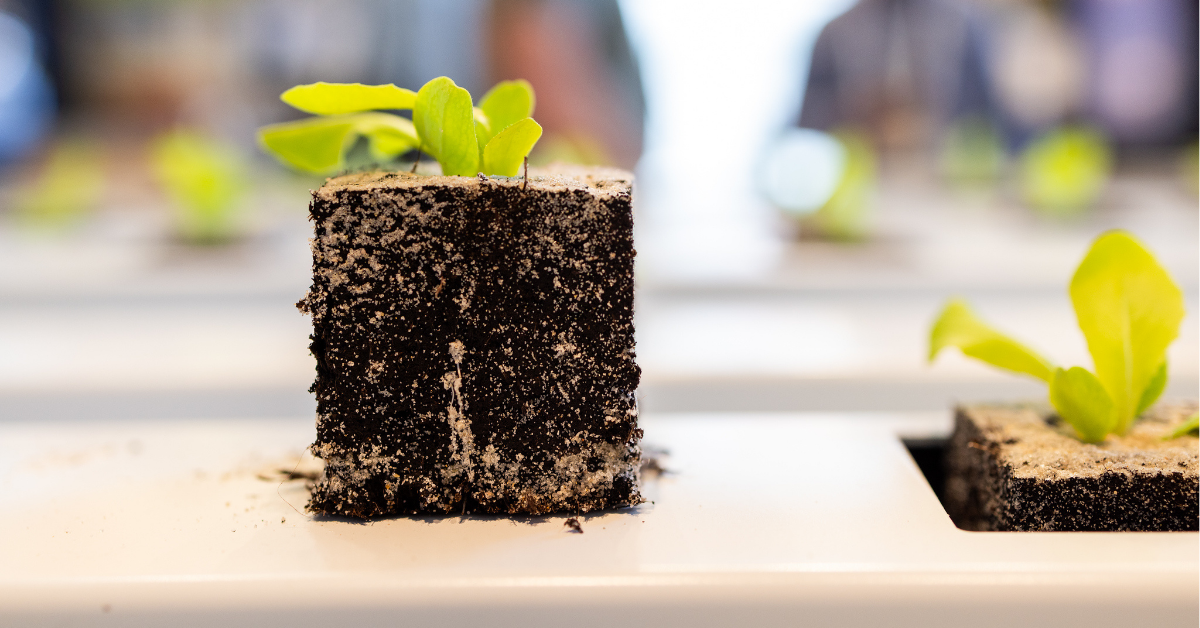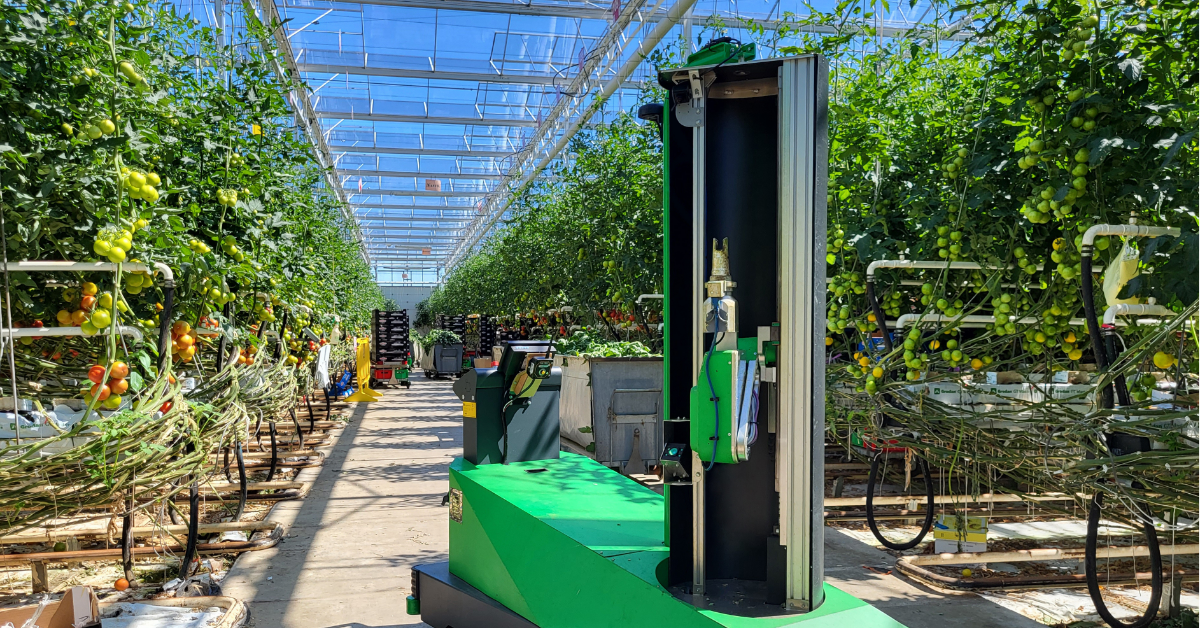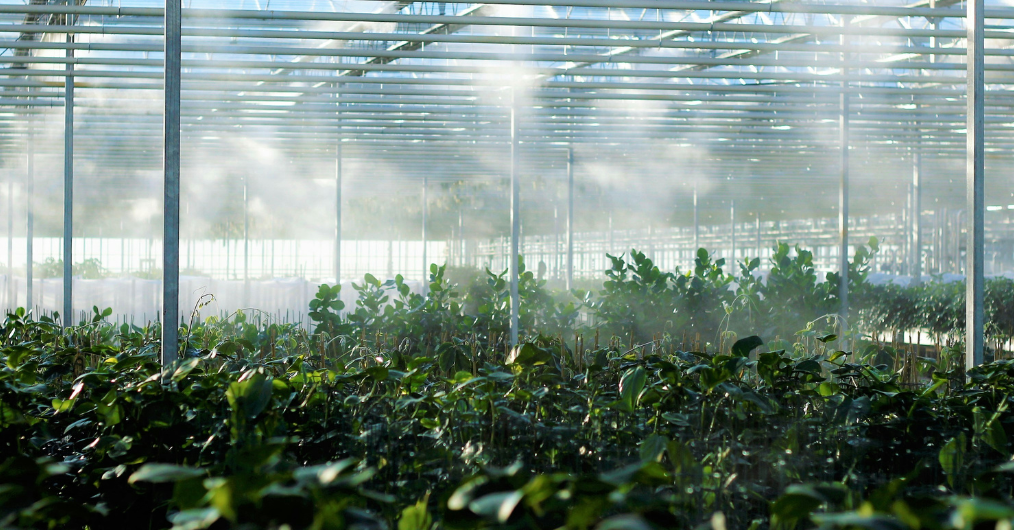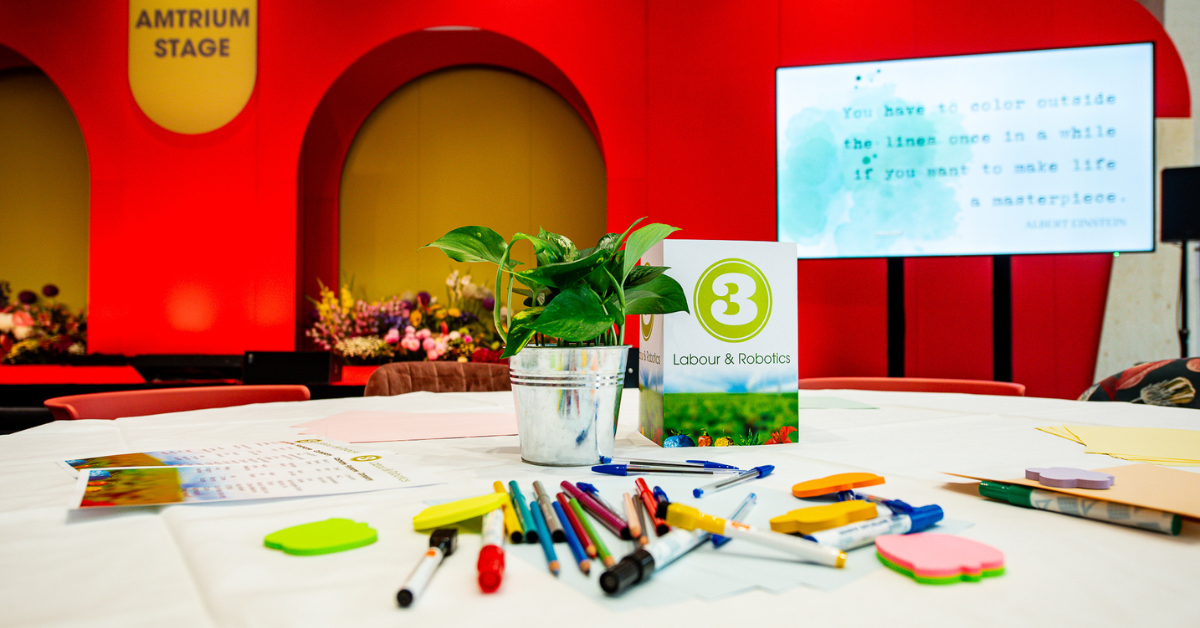Loading component...
Applying multiple energy saving innovations is key
 Author: Jacco Strating
Author: Jacco StratingThe Dutch greenhouse horticulture sector has the ambition to be climate neutral by 2040. At the same time, gas prices peaked to 800% of the original price in 2021. There is therefore a need from the market for an affordable (sustainable) alternative to meet the total energy demand for both cooling and heating and to reduce associated energy costs. During GreenTech Amsterdam, Thermeleon and BBBLS Energy Saving Greenhouses discussed possible solutions in the Technology Theater.
During the session 'Save energy by applying new innovations and solutions', managing director Anton Paardekooper of BBBLS (https://www.bbbls.net/) and director Jildou de Jong of Thermeleon (https://thermeleon.nl/) discussed the opportunities they can offer growers to save energy in the greenhouse. BBBLS developed a sustainable greenhouse with double paned roof and wall with large panes. When climate, weather or daylight requires it, soap bubbles fill the space between panes and boost insulation by 10 times. When insulation is not required anymore, the bubbles are removed to permit maximum light transmissions. Thermeleon has developed a heat battery that increases the energy efficiency of greenhouses. By strategically storing the surplus of heat during the day, the product offers sustainable heating at night. The result is a significant reduction in energy demand and a more sustainable greenhouse. These are two innovative tools that could offer a solution for growers, according to De Jong and Paardekooper.
Save up to 80% on energy input
“At BBBLS we are a firm believer in the Trias Energetica: first save as much energy as possible, then fill in the remaining demand using renewables and only use fossil fuels if there is no other option available”, says Anton Paardekooper of BBBLS. “We directly apply this first step in our greenhouse design. Using an innovative method of soap bubble insulation, we can save up to 80% on energy input compared to current high-tech greenhouses. Because our energy demand is dramatically lower than the current standard, we can operate the greenhouse fully electrical with energy from renewable sources, achieving climate neutral operations.”
Paardekooper believes that applying multiple energy saving innovations is key. “That means combining the most sustainable lighting, and the use of heat/cold storage. However, applying these solutions only makes sense if you reduce your energy input first. That is why it is important that companies that have an innovative solution for saving energy combine their powers in telling this story of energy reduction first.”
What we see now in Dutch horticulture is the rise of investments in geothermal energy, Paardekooper continues. “This is of course a good thing, but if you don’t reduce your energy input there is such a massive amount of geothermal energy needed to heat the greenhouses. Growers will never be able to run their greenhouses on geothermal heat 100% of the year if they don’t invest into energy saving solutions. We therefore feel that the focus in Horticulture energy transition should shift towards the first point of the Trias Energetica, so the renewable options available can be used most efficiently.”
Great need for sustainable alternatives
As said, the greenhouse horticulture sector in the Netherlands has the ambition to be climate neutral by 2040. At the moment, however, about 90% of the energy in greenhouses is still generated by burning fossil fuels, mainly natural gas, says Jildou de Jong of Thermeleon. “Of the total natural gas consumption in the Netherlands, 9% is used by the greenhouse horticulture sector. At the same time, gas prices are extremely high. As a result, there is a great need for an affordable (sustainable) alternative to reduce the total energy demand for both cooling and heating and to lower the associated energy costs. After all, you don't have to replace everything you don't use with renewable energy sources."
De Jong indicates that a greenhouse generates more heat year-round than the current (fossil fuel supplied) heat demand. This surplus energy is no less than an equivalent of 30 to 60 m3 natural gas per m2 greenhouse per year, and therefore more than the current average natural gas consumption. “However, there is a timing problem: of course, extra heat is generated during the day, but there is demand for it at night. In addition, the excess heat is lost through the windows together with the CO2 supply required for optimal plant growth, resulting in additional CO2 emissions and therefore additional costs – with the expected price increase for CO2.”
More energy-efficient greenhouse
Thermeleon solves these problems by making strategic use of the excess heat already present in the greenhouse. The Heat Battery provides both sustainable cooling and heating and thus provides 10 to 30% of the energy demand. The result: a more energy-efficient greenhouse that dampens the extreme temperature peaks of the indoor climate for optimal plant growth. “There is no 'one-size-fits-all' solution to achieve climate-neutral greenhouse horticulture. For example, geothermal energy and geothermal energy are a welcome source, but not suitable for every grower; and rising demand and declining subsidies are increasing associated costs. That is why energy reduction is always welcome," says De Jong.
“The increase in complexity and variety in energy sources, even within a single greenhouse, requires not only technical but also social innovation: from growers and stakeholders in the sector. It is important that the government provides growers with quality and tailor-made advice about the options for increasing sustainability. So that the grower has a positive starting point. The regional context must be considered in order to efficiently link energy surpluses and shortages. Due to the increasing share of sustainable energy sources and the additional peak and off-peak capacity, this is a complex puzzle.”
The tailor-made advice for each grower also includes help to finalize the business case and financing, says De Jong. “The complex landscape of electricity sales and emergency supplies to the grid must also be included on this balance sheet, including an estimate of the future. In order for this valuable and innovative sector to continue to thrive in the future, we cannot leave the growers to the fate of the capricious energy market.”
BBBLS and Thermeleon were both nominated for the prestigious Top Sector T&U Innovation Prize in 2021. Thermeleon won the audience award. Watch a video of the pitch that BBLS gave
